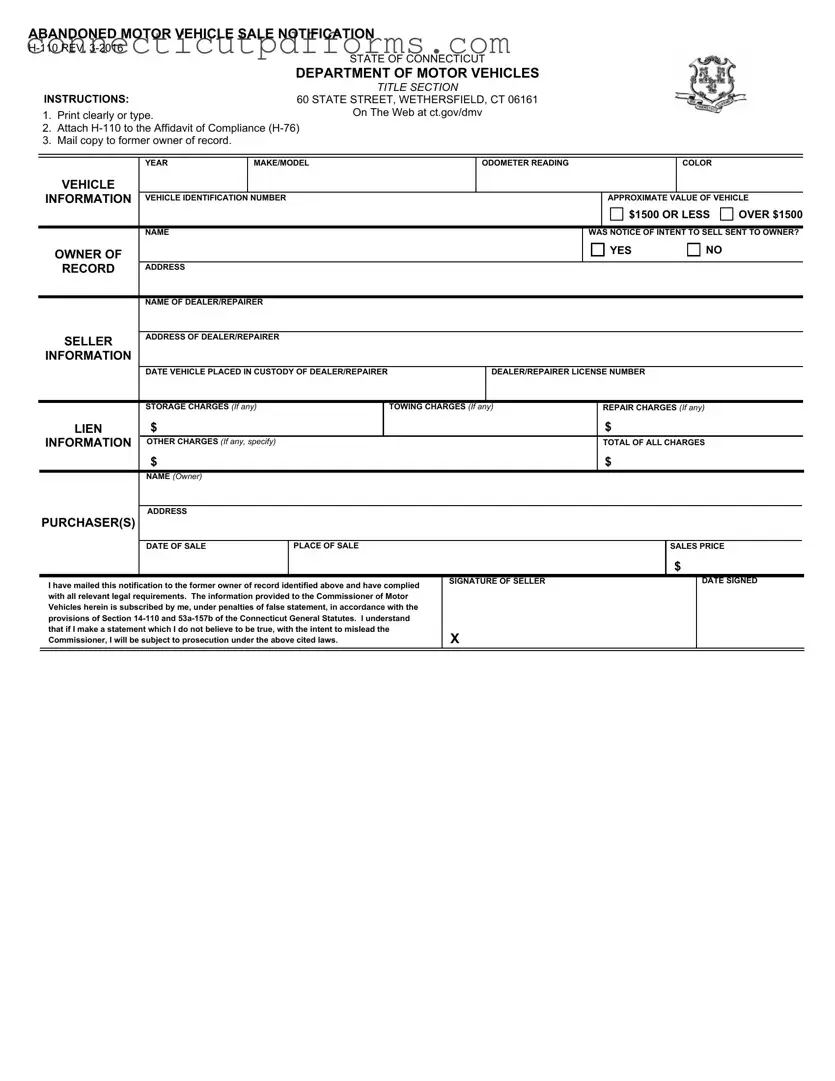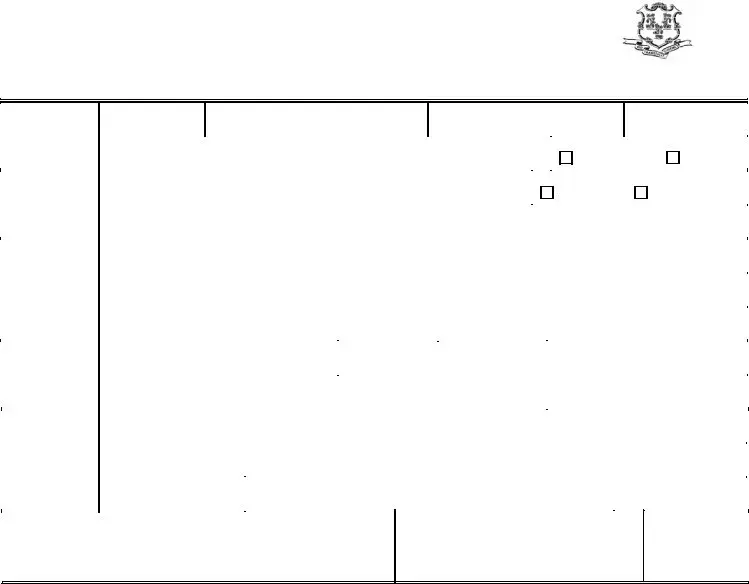The Connecticut H 110 form is designed for notifying former owners about the sale of abandoned vehicles. A similar document is the Vehicle Sale Notification form, commonly used in various states. This form serves the same purpose of informing the previous owner of a vehicle that it has been sold, often after a period of abandonment. Both documents require clear identification of the vehicle, including its make, model, and VIN, ensuring that the former owner is properly informed about the transaction involving their property.
Another comparable document is the Notice of Intent to Sell form. This form is typically used by dealerships and repair shops before selling a vehicle that has been left in their custody. Like the H 110, it includes details about the vehicle and the former owner, but it also emphasizes the seller's intent to proceed with the sale. Both forms aim to maintain transparency in the sale process and protect the rights of the former owner.
The Affidavit of Compliance (H-76) is also similar in nature. This document is often attached to the H 110 form, confirming that all legal requirements have been met prior to the sale of the vehicle. Both forms require the seller to provide proof that they have made attempts to contact the previous owner and followed the necessary steps outlined by state law. This ensures that the sale is conducted fairly and legally.
Another related document is the Bill of Sale. This form is used to finalize the transaction between the seller and the buyer. It includes essential information such as the sales price and the date of sale. While the H 110 focuses on notifying the former owner, the Bill of Sale serves as a receipt for the new owner, documenting the transfer of ownership and providing a record of the transaction.
The Lien Release form is also relevant in this context. If there was a lien on the vehicle, this document is necessary to clear any claims against it before the sale can proceed. Both the H 110 and the Lien Release ensure that the vehicle can be sold without any encumbrances, protecting the buyer from future legal issues related to the vehicle's title.
The Abandoned Vehicle Report is another document that shares similarities with the H 110 form. This report is often filed with local authorities when a vehicle is deemed abandoned. Like the H 110, it documents the vehicle's condition and the steps taken to notify the owner. Both forms aim to provide a clear record of the vehicle's status and the actions taken by the seller or repairer.
For those seeking clarity on legal protections, the Ohio Hold Harmless Agreement form is essential in safeguarding against potential liabilities. This form plays a pivotal role in various contexts, ensuring that parties involved understand their responsibilities. To explore further, refer to this comprehensive guide on the Ohio Hold Harmless Agreement.
The Tow Invoice is also related to the process surrounding abandoned vehicles. This document details the charges incurred for towing a vehicle that has been left unattended. Similar to the H 110, it includes information about the vehicle and the owner, ensuring that all parties are aware of the fees associated with the towing process. Both documents help maintain accountability and transparency in handling abandoned vehicles.
Another document that serves a similar purpose is the Storage Lien Notice. This notice is issued when a vehicle is stored and the owner fails to pay the storage fees. Like the H 110, it informs the vehicle owner of their obligations and the potential consequences of not addressing the fees. Both documents help protect the rights of storage facilities while ensuring that owners are kept informed about their vehicles.
Lastly, the Notification of Sale form, often used in private sales, bears resemblance to the H 110. This document is used when a vehicle is sold privately and serves to inform the previous owner of the sale. Both forms require the seller to provide key details about the vehicle and the transaction, reinforcing the importance of communication and transparency in the vehicle sale process.

